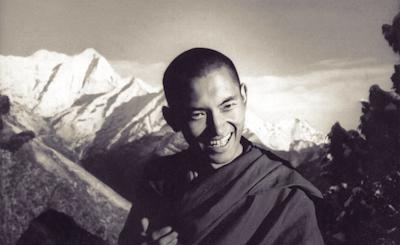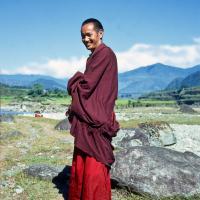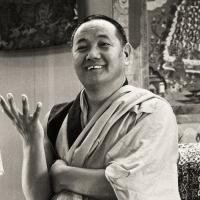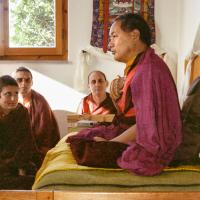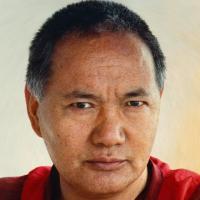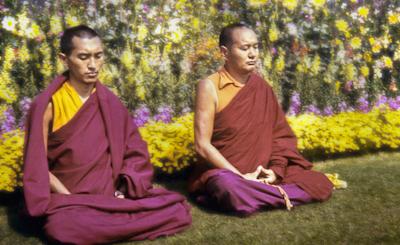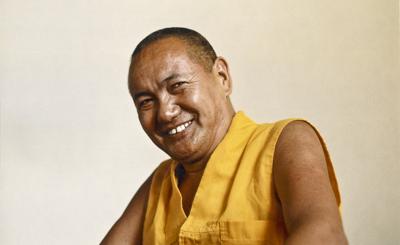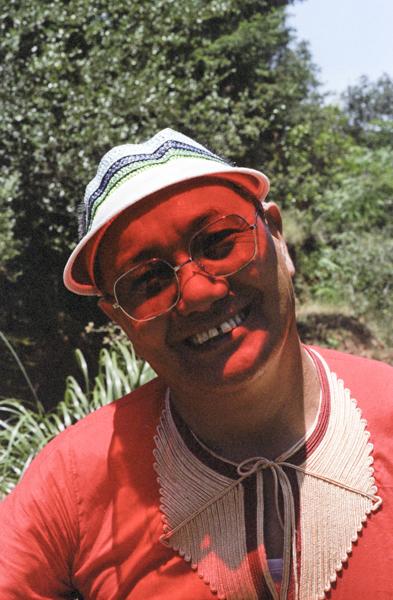Dear Friends,
Losar Tashi Delek! Thank you for receiving our monthly eletter. We hope you enjoy it and will share it far and wide!
February 28 marks the beginning of Losar, the Tibetan New Year, which also initiates the Fifteen Days of Miracles. During this time, Guru Shakyamuni Buddha exhibited miraculous powers to subdue those who lacked faith and to cultivate deeper devotion among his followers. This sacred period culminates on Chotrul Duchen, the Day of Miracles, on March 14. Throughout these fifteen days, all virtuous actions are multiplied by 100 million, as cited by Lama Zopa Rinpoche from the vinaya text Treasure of Quotations and Logic. For more insight, see Lama Zopa Rinpoche's advice on how to make the most of Losar and the Fifteen Days of Miracles. One of the ways would be to donate to the LYWA book publishing fund and we would be most grateful for your support, which allows us to do all the things mentioned below plus much, much more.
This Losar marks forty-one years since the passing of Lama Yeshe. Read on to learn about how I first met Lama, as well as the new offerings we have for you: a new video and podcast, the latest installment of the Big Love audiobook project, a new ebook, a discounted Big Love, and the last public teaching that Lama gave before his passing.
How I first met Lama Yeshe
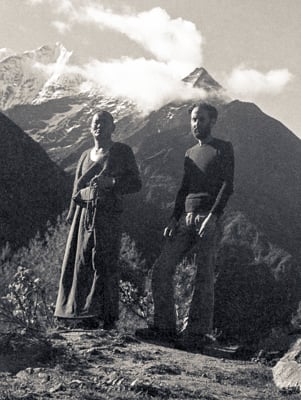 At this time each year, we remember the great Lama Yeshe even more than we normally do, and special practices are done at many FPMT centers to commemorate the life and teachings of our amazing founder and guide, who passed away on Tibetan New Year’s Day in 1984, at the age of forty-nine. I thought this time I’d say a few words about how I met Lama.
At this time each year, we remember the great Lama Yeshe even more than we normally do, and special practices are done at many FPMT centers to commemorate the life and teachings of our amazing founder and guide, who passed away on Tibetan New Year’s Day in 1984, at the age of forty-nine. I thought this time I’d say a few words about how I met Lama.
October 1972. I was sitting in the pale morning sun about halfway down the long flight of steps that led up into the gompa gazing into my bowl of suji wondering who the hell had come up with this stuff when the tall Canadian nun bowled up to me and said, “They tell me you’re a doctor?” Leaving the line of about ten assorted hippies of both sexes sitting beside me on the steps, one above the other, picking lice out of each other’s hair, I followed her around the side of the building to the old house down the back to see “Lama,” who, she told me, had barked his shin on the glass-topped coffee table that Mummy Max had bought him and the wound had gotten infected.
I wasn’t sure who Lama was. Lama Zopa Rinpoche was teaching the meditation course and everybody called him Rinpoche. He was the only lama I knew. I certainly didn’t know of any other lama at Kopan Monastery. Boy, was I wrong.
Anyway, Anila Ann led me around to the back of the house down the back and just before going in, I took in the spectacular view. Thousands of years ago, this used to be a lake, I remembered being told, until Manjushri, the Buddha of Wisdom, had sliced away part of the mountain to the south to drain the water to make the valley habitable. Away to my right, across the mist-filled valley, was the town of Kathmandu. To my left, peeping above the sea of fog was the great stupa of Boudha. In between, smoke was rising from small, scattered Nepalese villages, dogs were barking, and here and there the tops of precious trees could be seen. Then we went inside.
I was greeted by an incredibly warm, smiling Tibetan monk. “Thank you so much, dear; thank you so much.” I wasn’t aware of anything that I’d done that deserved his thanks, but I guess I said “No worries” or words to that effect. I certainly didn’t know that I was laying eyes for the first time on Lama Yeshe, the man who would completely put an end to my life as I knew it.
It turned out that Lama had had rheumatic fever as a child and had incurred one of its more serious complications: rheumatic heart disease (RHD), in which one or more heart valves are damaged. In Lama’s case, his aortic and mitral valves were affected; over the subsequent years they got progressively worse, leading to his untimely death at the age of forty-nine in 1984.
One of the worst things that can happen to a person with RHD is for bacteria to get into their blood stream and settle on the deformed valves, causing subacute bacterial endocarditis, which does even more damage. So it is urgent to treat any predisposing infection, like Lama’s infected leg, as quickly as possible. Accordingly, I sent down to one of the New Road pharmacies in Kathmandu for a bunch of Penicillin G syringes (no prescription necessary back then, maybe still now).
They arrived, and the next morning I went down to Lama’s room to administer his first shot. I was a little nervous but rolled the syringe between my hands professionally to warm up its contents to decrease their viscosity. So far so good. Lama lay face-down on his bed and hoisted up his shemthab, exposing the holy buttock. I swabbed it and then plunged the hypodermic in, drew back to make sure I wasn’t in a blood vessel, and squeezed. That’s when I discovered I’d made a rookie error, having forgotten to tighten the needle to the barrel of the syringe. It popped off the needle, whose hub was left sticking out of Lama’s backside, while much to my dismay, penicillin went everywhere, mainly all over the wall. Lama looked back at the extremely sheepish me, smiled kindly and said, “Maybe we try again tomorrow, dear?”
And that’s how I first met the incomparable Lama Yeshe.
the big love of Lama Yeshe
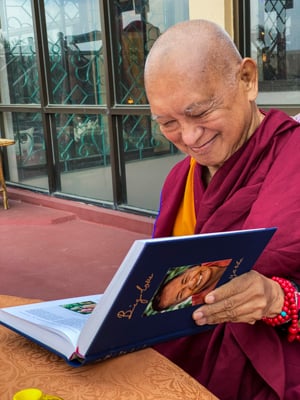 The official, authorized biography of Lama Yeshe, Big Love: The Life and Teachings of Lama Yeshe, is a treasure trove of personal stories from the lamas and students who learned, lived, and traveled with him, along with over 1,500 photos dating back to the 1960s. Whether you had the privilege of knowing Lama Yeshe personally or not, his wisdom, charisma, and boundless love and compassion continue to transcend time and space.
The official, authorized biography of Lama Yeshe, Big Love: The Life and Teachings of Lama Yeshe, is a treasure trove of personal stories from the lamas and students who learned, lived, and traveled with him, along with over 1,500 photos dating back to the 1960s. Whether you had the privilege of knowing Lama Yeshe personally or not, his wisdom, charisma, and boundless love and compassion continue to transcend time and space.
Throughout the Fifteen Days of Miracles, we invite you to deepen your connection with Lama Yeshe by purchasing Big Love at 50% off the original price (plus shipping). Just use the coupon code "BigLove2025" at checkout on our website to receive this special discount. And if you already have a copy, consider offering it as a meaningful gift to someone special!
Here’s some of the wonderful feedback we've received—find even more on our website:
Lekso, Lekso, well done. Big Love just arrived and it’s fantastic. So many color pics! It really tells the story of the early days and how Lama worked so hard to tame our minds, feisty disciples that we were, and to maintain the Buddhadharma in exile. Thank you so much for your hard work on these two volumes. They’re a treasure.
– Ven. Thubten Chodron, Sravasti Abbey
This is an important work for many reasons, not least because of its contribution to the history of the spread of Tibetan Buddhism in the West. An amazing chronicle of the life of one of the most influential lamas of the 20th century.
– Dr. José Cabezón, Former President, America Academy of Religion, Dalai Lama Professor of Tibetan Buddhism and Cultural Studies and Distinguished Professor of Religious Studies, University of California, Santa Barbara
From the Video Archive: The Most Important Practice to Eliminate Obstacles
This month from the video archive, Lama Zopa Rinpoche prepares students for a Yamantaka empowerment by discussing the proper motivation for taking the empowerment and how the wrathful aspect of Manjushri is the most important practice to eliminate obstacles to the attainment of wisdom. These teachings are an excerpt from the Ganden Lha Gyäma retreat, offered by Rinpoche at the Istituto Lama Tzong Khapa in Pomaia, Italy in 2004.
Visit and subscribe to the LYWA YouTube channel to explore our complete video collection of teachings by Lama Yeshe and many from Lama Zopa Rinpoche, available from our archive. See the FPMT YouTube channel and the Rinpoche Available Now page on the FPMT website for many more videos of Lama Zopa Rinpoche’s teachings.
On the LYWA Podcast: How Things Appear to Exist from their Own Side
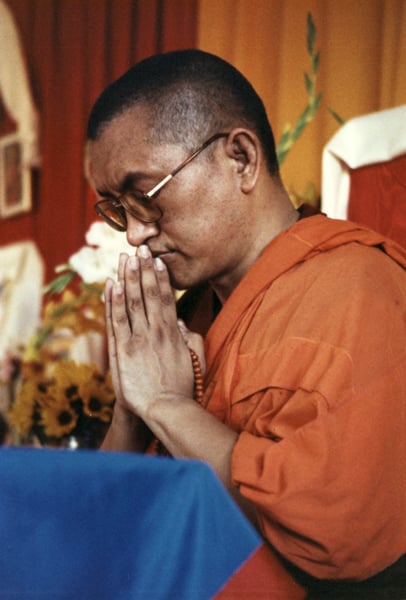 The way the "I" and phenomena appear to us, to our hallucinated mind, is they are not merely labeled by mind. As long as these things appear to you that way – not merely labeled by mind – they don’t exist. They’re totally empty there.
The way the "I" and phenomena appear to us, to our hallucinated mind, is they are not merely labeled by mind. As long as these things appear to you that way – not merely labeled by mind – they don’t exist. They’re totally empty there.
-Lama Zopa Rinpoche
This month on the LYWA podcast, Lama Zopa Rinpoche explains how things appear to exist from their own side. These teachings were given at the Thirty-third Kopan Meditation Course, held at Kopan Monastery, Nepal, in 2000. You can listen along to the transcript on our website.
The LYWA podcast contains hundreds of hours of audio, each with links to the accompanying lightly edited transcripts. See the LYWA podcast page to search or browse the entire collection by topic or date, and for easy instructions on how to subscribe.
The BIG LOVE AUDIOBOOK HEART PROJECT
 We are happy to share the latest audiobook installment of Big Love: The Life and Teachings of Lama Yeshe, written by Adele Hulse. Organized by Janet Brooke, this heart project comprises narrations recorded by personal friends of the late Åge Delbanco (Babaji), one of Lama Yeshe's earliest students. This is a unique opportunity to hear this extraordinary account of Lama Yeshe’s life read by those who were there as the story unfolded—especially valuable if you don’t have a copy.
We are happy to share the latest audiobook installment of Big Love: The Life and Teachings of Lama Yeshe, written by Adele Hulse. Organized by Janet Brooke, this heart project comprises narrations recorded by personal friends of the late Åge Delbanco (Babaji), one of Lama Yeshe's earliest students. This is a unique opportunity to hear this extraordinary account of Lama Yeshe’s life read by those who were there as the story unfolded—especially valuable if you don’t have a copy.
The Big Love Heart Project has finished Volume 1 (1935-1978) and now begins Volume 2 (1979-84). This month brings you Chapter 17: 1979: Even Your Enemy That Tries to Kill You Is Your Best Friend, read by Steve Pearl. Chapter 17 includes stories about Lama Yeshe giving Tara Cittamani initiations and teachings, Lama’s many activities during an extended stay at Kopan Monastery, the Lamas’ extensive teaching tour to Europe, USA and Australia, and the Twelfth Kopan meditation course.
More free LYWA Books!
 We are excited to share a new ebook with you: Teachings from the 51st Kopan Meditation Course, transcribed and edited by Ven. Joan Nicell and lightly edited by Gordon McDougall. This ebook presents twelve lectures given by Lama Zopa Rinpoche during the 51st Kopan Meditation Course, held at Kopan Monastery, Nepal, in November–December 2018. In these teachings, Rinpoche provides an overview of the path to enlightenment and explains that the antidote to the sufferings of samsara is meditation on emptiness.
We are excited to share a new ebook with you: Teachings from the 51st Kopan Meditation Course, transcribed and edited by Ven. Joan Nicell and lightly edited by Gordon McDougall. This ebook presents twelve lectures given by Lama Zopa Rinpoche during the 51st Kopan Meditation Course, held at Kopan Monastery, Nepal, in November–December 2018. In these teachings, Rinpoche provides an overview of the path to enlightenment and explains that the antidote to the sufferings of samsara is meditation on emptiness.
You can order the ebook from your favorite vendor, read it online, or download the PDF. LYWA Members can download the ebook for free. This is the second release in a new ebook series published by LYWA. The plan is to convert all the Kopan courses into ebooks, including both those already available on our website and those not yet published. Read more about the Kopan eBook Project here.
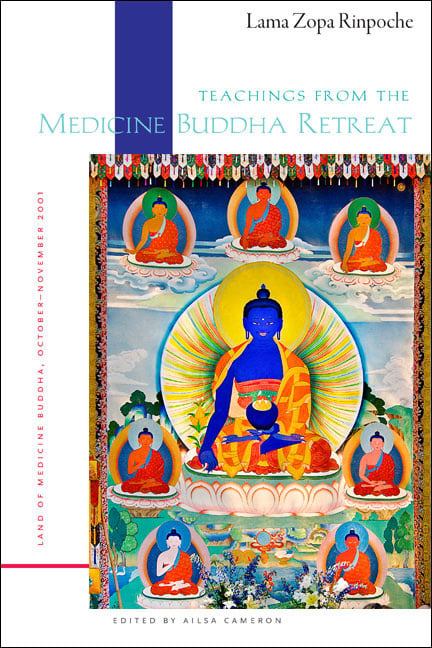 We are also happy to announce that we have posted Teachings from the Medicine Buddha Retreat on our website. First published in 2009 and edited by Ailsa Cameron, this book is nearly a complete record of the teachings given by Lama Zopa Rinpoche during a Medicine Buddha retreat held at Land of Medicine Buddha in Soquel, California, from October 26 to November 17, 2001.
We are also happy to announce that we have posted Teachings from the Medicine Buddha Retreat on our website. First published in 2009 and edited by Ailsa Cameron, this book is nearly a complete record of the teachings given by Lama Zopa Rinpoche during a Medicine Buddha retreat held at Land of Medicine Buddha in Soquel, California, from October 26 to November 17, 2001.
This title was originally offered for sale, but you can now read the entire book online, order a free print copy, download the PDF, or get the ebook from your favorite ebook vendor. LYWA members can download the ebook for free from our Members' area.
Books for LYWA Members
 Last week we sent out a mailing to LYWA Members offering two new books: Rinpoche's Animal Friends, our latest free book, and The Power of Meditation, a book by Lama Zopa Rinpoche, published by Wisdom Publications. If you are currently a Member of LYWA and have not emailed us yet, please let us know:
Last week we sent out a mailing to LYWA Members offering two new books: Rinpoche's Animal Friends, our latest free book, and The Power of Meditation, a book by Lama Zopa Rinpoche, published by Wisdom Publications. If you are currently a Member of LYWA and have not emailed us yet, please let us know:
- If you prefer a copy of Rinpoche's Animal Friends, The Power of Meditation, or both.
- Do you prefer the print or ebook versions of The Power of Meditation? (Please note that Rinpoche's Animal Friends is only available in print, and no ebook version is offered.)
- If you request print copies, kindly include a detailed shipping address and phone number.
Please let us know your preferences soon. We aim to ship books by the end of April. Thank you for your continued support of LYWA Membership! Together, we are making the precious teachings of Lama Yeshe and Lama Zopa Rinpoche accessible to the world. Your generosity and support are deeply appreciated.
Updates & Community news
 In our January e-letter, we shared the exciting news that Rinpoche's Animal Friends has been printed in Latvia and is on its way to the United States. We expect to receive it by late-March and plan to begin sending copies by mid-April. A special mailing will be sent out to announce when you can start placing your orders. Thank you so much for your patience—we can’t wait to get it into your hands!
In our January e-letter, we shared the exciting news that Rinpoche's Animal Friends has been printed in Latvia and is on its way to the United States. We expect to receive it by late-March and plan to begin sending copies by mid-April. A special mailing will be sent out to announce when you can start placing your orders. Thank you so much for your patience—we can’t wait to get it into your hands!
In our extended community news, Root Institute in Bodhgaya, India, is hosting Swift Return Practice for Kyabje Zopa Rinpoche during this Losar season. You can find out more information here on their website.
We are also delighted to welcome Tom Truty to our LYWA team as Web Editor, working closely with our long-time Editor Sandra Smith. Some of you may know Tom from his time with FPMT; his years of experience and dedication to the Lamas’ teachings will bring benefit to all. Welcome Tom!
Continue reading to find the last public teaching Lama Yeshe gave before his passing in March 1984. As always, thank you for your love and support, especially during this powerful, merit-multiplying time.
Big love,

Nick Ribush
Director
THIS MONTH'S TEACHING: Bodhicitta—The Perfection of Dharma
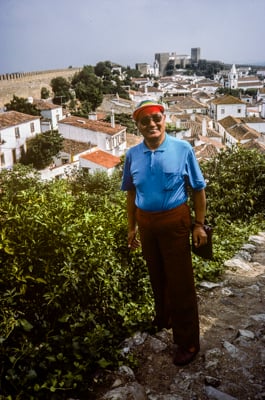 I think it is absolutely essential for us to have loving kindness toward others. There is no doubt about this. Loving kindness is the essence of bodhicitta, the attitude of the bodhisattva. It is the most comfortable path, the most comfortable meditation. There can be no philosophical, scientific or psychological disagreement with this. With bodhicitta, there's no East-West conflict. This path is the most comfortable, most perfect, one hundred percent uncomplicated one, free of any danger of leading people to extremes. Without bodhicitta, nothing works. And most of all, your meditation doesn't work, and realizations don't come.
I think it is absolutely essential for us to have loving kindness toward others. There is no doubt about this. Loving kindness is the essence of bodhicitta, the attitude of the bodhisattva. It is the most comfortable path, the most comfortable meditation. There can be no philosophical, scientific or psychological disagreement with this. With bodhicitta, there's no East-West conflict. This path is the most comfortable, most perfect, one hundred percent uncomplicated one, free of any danger of leading people to extremes. Without bodhicitta, nothing works. And most of all, your meditation doesn't work, and realizations don't come.
Why is bodhicitta necessary for success in meditation? Because of selfish grasping. If you have a good meditation but don't have bodhicitta, you will grasp at any little experience of bliss: "Me, me; I want more, I want more." Then the good experience disappears completely. Grasping is the greatest distraction to experiencing single-pointed intensive awareness in meditation. And with it, we are always dedicated to our own happiness: "Me, me I'm miserable, I want to be happy. Therefore I'll meditate." It doesn't work that way. For some reason good meditation and its results—peacefulness, satisfaction and bliss—just don't come.
Also, without bodhicitta it is very difficult to collect merits. You create them and immediately destroy them; by afternoon, the morning's merits have gone. It's like cleaning a room and an hour later making it dirty again. You make your mind clean, then right away you mess it up—not a very profitable business. If you want to succeed in the business of collecting merits, you must have bodhicitta. With bodhicitta you become so precious—like gold, like diamonds; you become the most perfect object in the world, beyond compare with any material things.
From the Western, materialistic point of view, we'd think it was great if a rich person said, "I want to make charity. I'm going to offer $100 to everybody in the entire world." Even if that person gave with great sincerity, his or her merit would be nothing compared with just the thought, "I wish to actualize bodhicitta for the sake of sentient beings, and I'll practice the six paramitas as much as I can." That's why I always say, actualization of bodhicitta is the most perfect path you can take.
Remember the story of the Kadampa geshe who saw a man circumambulating a stupa? He said, "What are you doing?" and the man answered, "Circumambulating." So the geshe said, "Wouldn't it be better if you practiced Dharma?" Next time the geshe saw the man he was prostrating, and when he again asked what he was doing, the man replied, "One hundred thousand prostrations." "Wouldn't it be better if you practiced Dharma?" asked the geshe. Anyway, the story goes on, but the point is that just doing religious-looking actions like circumambulation and prostration isn't necessarily practicing Dharma. What we have to do is transform our attachment and self-cherishing, and if we haven't changed our mind in this way, none of the other practices work; doing them is just a joke.
Even if you try to practice tantric meditations, unless you've changed within, you won't succeed. Dharma means a complete change of attitude—that's what really brings you inner happiness, that is the true Dharma, not the words you say. Bodhicitta is not the culture of ego, not the culture of attachment, not the culture of samsara. It is an unbelievable transformation, the most comfortable path, the most substantial path—definite, not wishy-washy. Sometimes your meditation is not solid; you just space out. Bodhicitta meditation means you really want to change your mind and actions and transform your whole life.
This teaching is excerpted from a lecture on bodhicitta and the bodhisattva vows given on December 10, 1983, during the Sixteenth Kopan Meditation Course held at Kopan Monastery in Nepal. It was the last public teaching by Lama Yeshe before he passed away in March 1984. You can find the entire teaching here on our website.














